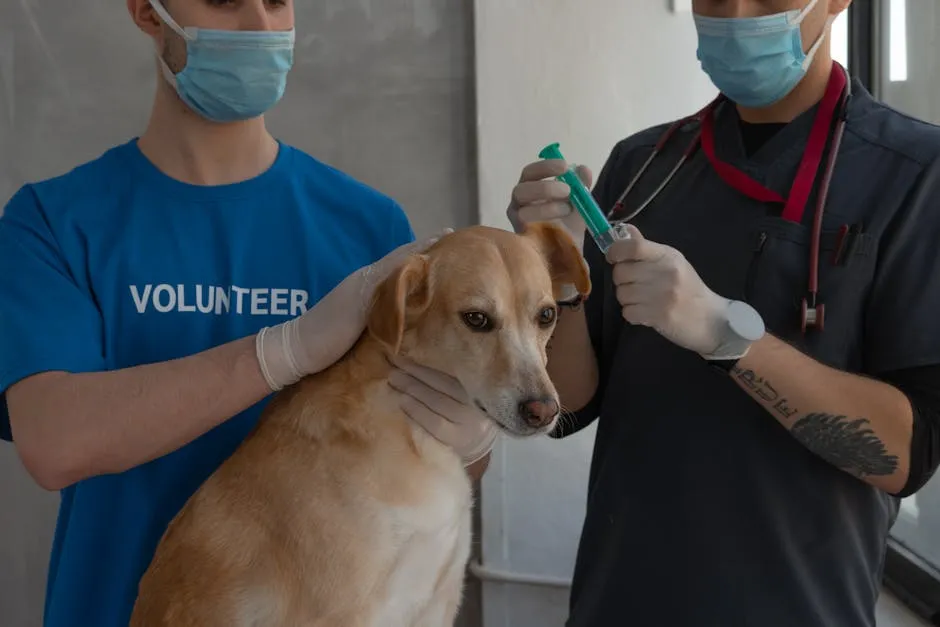Introduction
When it comes to dog safety, pitbull bite statistics create a whirlwind of debate. These numbers aren’t just cold data; they’re crucial in shaping our perceptions and policies surrounding dog ownership. With around 4.5 million dog bites reported annually in the U.S., the role of statistics cannot be overstated. They provide insights into which breeds are involved and how to mitigate risks.
Societal perceptions of pitbulls are often clouded by fear and misunderstanding. Many view them as inherently dangerous, bolstered by alarming statistics that suggest pitbulls are responsible for a disproportionate number of dog-related fatalities. For instance, while pitbulls make up only about 6% of the total dog population, they account for a staggering percentage of severe bite incidents. This stark contrast fuels anxiety and drives breed-specific legislation in various regions.
This article aims to demystify pitbull bite statistics by offering a comprehensive overview of available data. We’ll examine the reliability of these statistics, address the factors contributing to dog bites, and scrutinize the context behind these numbers. By doing so, we hope to foster a more informed dialogue on pitbull ownership and dog safety in general.

Understanding Dog Bite Statistics
Overview of Dog Bite Statistics
Dog bites are a serious public health concern in the U.S. Every year, over 4.5 million dog bites are reported, leading to approximately 800,000 medical consultations. Notably, children aged 5 to 9 are the most frequent victims, often sustaining severe injuries. The American Veterinary Medical Association (AVMA) notes that nearly 1,000 individuals seek emergency care daily due to dog-related injuries.
When examining breed-specific data, pitbulls emerge prominently in discussions. They are often cited as the breed involved in a significant percentage of fatal dog attacks. For instance, between 2005 and 2019, pitbulls accounted for roughly 66% of dog-related fatalities, leading to widespread concern. However, it’s essential to consider that the overall risk of dog bites remains low. The likelihood of being fatally bitten by a dog is astronomically low, making up only a fraction of overall dog interactions.

When it comes to training your dog, having the right resources is essential. A comprehensive Dog Training Guidebook can provide invaluable tips and techniques to help you train your dog effectively, ensuring a well-behaved companion that is less likely to contribute to bite incidents.
Impact of Dog Breeds on Bite Statistics
Statistics can sometimes paint an exaggerated picture of specific breeds. For instance, while pitbulls are frequently mentioned in discussions about dangerous dogs, many of these figures stem from breed misidentification and media sensationalism. The Centers for Disease Control and Prevention (CDC) has ceased tracking dog breeds involved in bites since 2000 due to inconsistencies in identification. Various organizations report different statistics, with sources like DogsBite.org often cited by advocacy groups against pitbulls. This discrepancy highlights a critical issue: the need for reliable and unbiased data.
Moreover, studies have shown that many dogs labeled as pitbulls are actually mixed breeds or other bully-type dogs. This misidentification leads to inflated statistics about pitbulls, which can skew public perception. For example, while pitbulls and rottweilers together account for a large percentage of fatal attacks, it’s crucial to remember that responsible ownership and training play pivotal roles in dog behavior.

Speaking of responsible ownership, ensuring your dog is well-groomed can also help with their behavior. A Dog Grooming Kit is a must-have for any dog owner, as regular grooming can help keep your dog comfortable and less prone to stress and aggression.
In conclusion, while pitbulls do feature prominently in bite statistics, understanding the nuances behind these numbers is essential. Social factors, ownership practices, and the environment significantly influence the likelihood of dog bites, regardless of breed. By focusing on responsible dog ownership, we can reduce bite incidents and foster a safer community for humans and dogs alike.

Pitbull-Specific Statistics
Prevalence of Pitbulls in Dog Bite Incidents
Pitbulls have gained notoriety in dog bite statistics. They represent about 6% of the total dog population in the United States. However, startlingly, they account for approximately 66% of dog-related fatalities. Research indicates that from 2005 to 2019, pitbulls were involved in a staggering 366 deaths, making them the dominant breed in fatal dog attacks. On average, this translates to an annual total of about 50 fatalities attributed to pitbulls.
For context, in 2019 alone, pitbulls were responsible for 27 fatalities from dog attacks, highlighting their significant role in severe incidents. Additionally, data suggests that pitbulls contribute to around 22.5% of total dog bites reported each year, which translates to thousands of incidents. Despite their small percentage in the overall dog population, the disproportionate number of bites raises questions about ownership, training, and breed reputation.

To ensure your pitbull is safe and secure, a good Dog Crate can provide a safe space for them, reducing anxiety and promoting better behavior.
Contextualizing the Statistics
To better understand these statistics, it’s crucial to consider the total dog population in the U.S., estimated at around 90 million. With pitbulls estimated to range between 4.5 to 18 million, their representation in bite statistics becomes even more perplexing. Historically, pitbulls were bred for strength and tenacity, primarily for bull-baiting and later for dog fighting. This legacy has shaped public perception, casting them as inherently aggressive.
The notion that pitbulls are dangerous is fueled by sensationalized media coverage. While incidents involving pitbulls receive significant attention, it’s important to realize that other breeds also contribute to bite statistics. The American Veterinary Medical Association (AVMA) states that nearly any breed can exhibit aggressive behavior when not properly trained or socialized. In fact, between 2005 and 2019, breeds like Rottweilers and German Shepherds were also implicated in serious attacks.

In addition to training and socialization, proper nutrition is essential for your dog’s well-being. Investing in a Dog Food Storage Container ensures that your pet’s food stays fresh and safe, promoting better health and behavior.
However, the statistics can mislead the public if not interpreted correctly. While pitbulls may feature prominently in bite reports, it is essential to examine the context of ownership and environment. In many cases, irresponsible ownership practices, lack of training, and neglect contribute more to the incidents than the breed itself.

Misidentification and Its Impact
Another key issue influencing pitbull bite statistics is breed misidentification. Numerous studies indicate that a significant proportion of dogs labeled as pitbulls are, in fact, mixed breeds or belong to other bully-type breeds. Research shows that about 60% of dogs identified as pitbulls lack DNA from recognized pitbull breeds. This high rate of misidentification inflates statistics, leading to a distorted perception of their danger.
When examining bite statistics, it’s vital to recognize that many dogs labeled as pitbulls may not possess the characteristics typically associated with the breed. The arbitrary classification can result in misleading data, causing unnecessary fear. Additionally, studies reveal that the actual breed involved in bite incidents is often misreported due to visual identification errors by the public, animal control officers, and even shelters.

For a better understanding of canine behavior, consider reading a Canine Behavior Book. This resource can help dog owners understand their pets better and reduce the likelihood of incidents.
This misidentification has practical implications for policy decisions and breed-specific legislation (BSL). Communities often react to perceived threats by implementing bans or restrictions on certain breeds, including pitbulls. However, these measures may not effectively address the real issue of responsible dog ownership.
In summary, the prevalence of pitbulls in bite statistics begs deeper scrutiny. While the numbers may appear alarming, the context surrounding dog ownership and the historical reputation of the breed is critical. By addressing the factors contributing to these incidents—like misidentification, irresponsible ownership, and lack of training—we can foster a more nuanced understanding of dog safety that goes beyond breed alone.

Factors Contributing to Dog Bites
Owner Responsibility and Behavior
When it comes to dog bites, owner behavior is a massive factor. Responsible dog ownership can significantly reduce bite incidents. A study published in the Journal of the American Veterinary Medical Association found that owners who engage in training and socialization are less likely to have aggressive dogs. Dogs reflect their owner’s behavior, much like kids mimic their parents. If the owner is calm and assertive, chances are the dog will be too.
In contrast, irresponsible ownership tends to lead to aggression. A lack of proper training can make a dog feel threatened or confused. This, in turn, can manifest in aggressive behaviors. Furthermore, owners who fail to provide adequate exercise or socialization can create pent-up energy, leading to frustration. This frustration can result in bites.
Research consistently shows that educating dog owners about canine behavior can help mitigate risks. A 2016 study indicated that communities with active dog training programs saw a noticeable decrease in dog bite incidents. It’s clear: a responsible owner is a dog’s best friend.

To promote responsible ownership, consider using a Dog Training Clicker. This simple tool can help reinforce positive behaviors, making training more effective and enjoyable for both you and your dog.
Environmental and Situational Factors
Now, let’s talk about the environment. Dogs are influenced by their surroundings. Factors like the presence of children, other animals, and even noise can trigger aggressive behavior. For instance, a dog might feel threatened if a child suddenly approaches or if it perceives another pet as a rival. Moreover, a dog with a troubled history—like past abuse or neglect—may react aggressively in certain situations.
Interestingly, breed-specific legislation (BSL) has been implemented in various areas, aiming to reduce dog bite incidents. However, the effectiveness of BSL is debatable. Research by the American Veterinary Medical Association suggests that BSL does not significantly decrease dog bite rates. Instead, it often shifts the problem to other breeds, creating a false sense of security.
In some regions, even after implementing BSL, bite incidents remain high. For example, Denmark banned pit bulls in 2010, yet dog bite-related hospitalizations did not decline. Instead, a focus on responsible ownership and community education is likely to yield better results than blanket bans based on breed alone.

To ensure safety during travel, consider a Dog Car Seat Cover. This can help keep your car clean and your dog secure, reducing distractions while driving.
The Role of Media and Public Perception
The media plays a pivotal role in shaping public perception of dog breeds, especially pitbulls. Sensationalized reporting often highlights violent incidents, leading to fear and misunderstanding. When a pitbull attack makes headlines, it tends to overshadow positive stories about the breed. This bias creates a perception that all pitbulls are dangerous.
In reality, the majority of pitbulls are loving and loyal. According to a study published in the journal Animal Welfare, the way the media portrays a breed can significantly influence public opinion. For instance, when media outlets emphasize the aggressiveness of pitbulls, it can lead to increased fear and stigma, despite the fact that many pitbulls are gentle and well-behaved.

To help foster a positive image of your dog, consider capturing those memorable moments with a Pet Camera. This can allow you to share the joy and love your pet brings to your life, countering negative narratives with positive stories.
Moreover, sensationalized reporting can distort statistics. A report from the CDC noted that many dogs labeled as pitbulls in bite incidents were, in fact, mixed breeds or other bully-type dogs. This misidentification inflates the statistics surrounding pitbull attacks, causing further panic.
Ultimately, media representation contributes to a cycle of fear, misunderstanding, and breed discrimination. By focusing on responsible ownership and promoting a balanced view of pitbulls and other breeds, we can help create a more informed public that understands dog behavior better.
In summary, various factors contribute to dog bites, including owner behavior, environmental influences, and media portrayal. Understanding these elements is crucial for fostering responsible dog ownership and reducing bite incidents, allowing for a safer environment for both dogs and humans alike.

Legal and Safety Considerations
Understanding Breed-Specific Legislation
Breed-specific legislation (BSL) involves laws or regulations that target specific dog breeds deemed dangerous. Often, pitbulls find themselves at the heart of these discussions. The intent is to enhance public safety by restricting or banning ownership of certain breeds. However, the efficacy of such laws is hotly debated.
Cities like Denver, Colorado, and Miami, Florida, have enacted BSL, leading to significant consequences for pitbull owners. In Denver, a ban on pitbulls resulted in thousands of dogs being removed from homes. Sadly, this often led to heartbroken families and overcrowded shelters. Yet, despite these measures, the overall effectiveness of BSL in reducing dog bites remains questionable.

For example, Denmark implemented a pitbull ban in 2010, yet dog bite-related hospitalizations did not decline. In fact, many studies suggest that BSL does not significantly decrease dog bite incidents. The American Veterinary Medical Association (AVMA) argues that the focus should be on responsible ownership rather than targeting specific breeds. This approach would likely yield better outcomes for public safety.
Legal Responsibilities of Dog Owners
Dog owners carry substantial legal responsibilities. If a dog bites someone, the owner may be liable for damages. This responsibility extends not just to physical injuries but also to emotional trauma resulting from the incident. In many states, laws hold dog owners strictly liable for bites, meaning that even if the dog had no previous history of aggression, the owner could still face legal consequences.
Liabilities can escalate quickly. Medical costs for dog bite victims can reach thousands of dollars, and in severe cases, victims may require extensive rehabilitation or therapy. It’s crucial for dog owners to consider insurance coverage that includes dog bite liability. Homeowners’ insurance often covers dog bites, but it’s wise to confirm this with your provider.
Moreover, maintaining proper training and socialization for dogs can help mitigate risks. A well-trained dog is less likely to act aggressively, lowering the chances of bites and subsequent legal issues. In the end, responsible ownership, coupled with appropriate insurance, can safeguard not only the owner but also the community at large.

To help with training and socialization, consider using Dog Agility Equipment. This can provide a fun and engaging way to train your dog, improving their behavior and social skills.
In summary, navigating the legal landscape surrounding dog ownership requires diligence and awareness. Owners must understand and comply with local laws, including BSL, while taking proactive steps to ensure their pets are well-trained and socialized. By doing so, they contribute to a safer environment for everyone.
Conclusion
Pitbull bite statistics reveal a complex picture that goes beyond mere numbers. While it’s true that pitbulls represent about 6% of the total dog population in the U.S., they account for approximately 66% of dog-related fatalities. This stark statistic can make pitbulls seem like the “bad boys” of the canine world. However, it’s crucial to consider the broader context surrounding these figures.
The historical breeding practices of pitbulls, often for strength and tenacity, contribute to the perception of danger associated with them. Yet, this doesn’t inherently mean they are more aggressive than other breeds. Many factors influence a dog’s behavior, including socialization, training, and the owner’s experience. Studies show that responsible ownership and proper training dramatically reduce the likelihood of aggressive incidents.
Furthermore, the issue of breed misidentification adds another layer of complexity. Research indicates that a significant percentage of dogs labeled as pitbulls are actually mixed breeds or other bully types. This misclassification leads to inflated statistics, further skewing public perception and influencing policy decisions.
For those looking to deepen their understanding of dog breeds, a Pitbull Breed Book can provide valuable insights into the breed’s characteristics and behavior.
As we reflect on pitbull bite statistics, it’s essential to emphasize the importance of responsible dog ownership. Owners must prioritize proper training, socialization, and environmental management to mitigate potential risks. This responsibility extends to understanding dog behavior and recognizing the signs of distress or aggression.
Promoting a nuanced understanding of dog breeds and bite statistics is vital. By doing so, we can foster better policies and practices that prioritize public safety without resorting to blanket bans based on breed alone. In the end, an informed community is a safer community, where both humans and dogs can thrive together harmoniously.
FAQs
What percentage of dog bites are attributed to pitbulls?
Statistics indicate that pitbulls are involved in approximately 22.5% of dog bites reported annually in the United States. Despite this, it’s essential to understand that while they account for a significant portion of bites, they do not represent the majority of dog interactions.
Are pitbulls more dangerous than other dog breeds?
Perceptions of danger surrounding pitbulls often stem from media representation rather than inherent breed characteristics. While pitbulls are frequently mentioned in discussions about aggressive dogs, many factors, including training and social environment, play a crucial role in a dog’s behavior. Studies suggest that any breed can exhibit aggressive tendencies if not properly cared for.
How can dog bites be prevented?
Preventing dog bites requires a multi-faceted approach. Owners should focus on training and socializing their dogs from a young age. Additionally, public awareness about dog behavior is crucial. Understanding canine signals can help people avoid situations that might provoke a bite. Lastly, supervising interactions between dogs and children can significantly reduce bite incidents.
What should I do if bitten by a dog?
If bitten, the first step is to clean the wound thoroughly with soap and water. Seeking medical attention is essential, even for minor injuries. It’s also wise to gather information about the dog’s vaccination status, particularly concerning rabies. Lastly, reporting the incident to local authorities can help prevent future attacks and ensure public safety.
Please let us know what you think about our content by leaving a comment down below!
Thank you for reading till here 🙂
All images from Pexels




